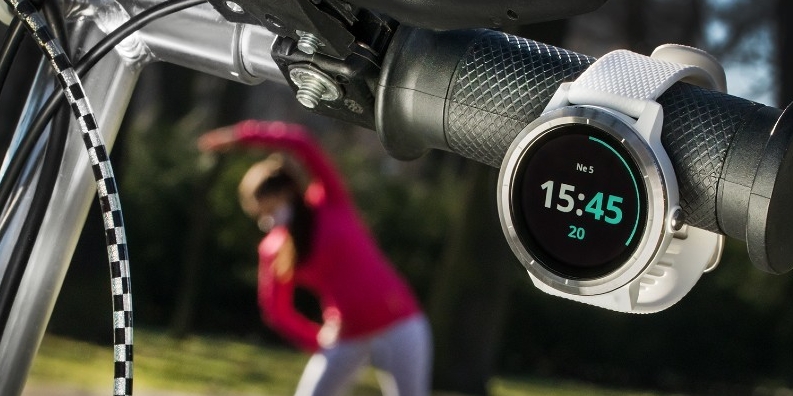Garmin smartwatches offer tons of features. Introduces you to final 5 exciting ones.
Tip 21: Identify the onset of material fatigue
Are you curious about the distance you’ve covered with your running shoes or bike? You can easily monitor wear and tear using the Gear Tracker feature. Additionally, you can establish a distance-based reminder to notify you when it’s time to replace your shoes or schedule a service. Here’s a step-by-step guide:
- Open the Garmin Connect app on your smartphone and tap on “More” followed by “Equipment”.
- Click on “Add” and input the brand, type, first use date, and maximum distance of your equipment. You can also choose to automatically add this equipment to specific activities. Save your settings.
- If you use multiple bikes or running shoes, you can specify which equipment was used for each activity by tapping on the three dots in the top right corner of the activity overview and selecting “Add/remove equipment”.
Tip 22: Establish quick access
To access certain functions rapidly, creating shortcuts is an effective solution. Follow these steps to establish shortcuts:
- Press and hold the Menu button, which is the middle button on the left side of your Fenix device.
- Scroll down to System and click on Hotkeys. In this section, you can specify the action that should occur when a key is pressed for an extended period or when two keys are pressed simultaneously. You can select from various options, such as accessing payment features, capturing a screenshot, or saving a location.
Tip 23: The benefits of the new HFV feature
Newer smartwatches such as Forerunner 955, Fenix 7, and Epix 2 now have the capability to exhibit heart rate variability, which can offer enhanced insights into recovery and overall well-being. This feature also allows you to view daily and 7-day average values relative to your personal baseline, providing intriguing health, recovery, and fitness data. Let’s explore what lies behind this technology:
What is heart rate variability?
Heart rate variability (HRV) is the minute fluctuations in the time gap between successive heartbeats. Although these variations are minimal, they represent an essential physiological marker of the body’s ability to handle stress. Factors such as breathing, hormonal reactions, metabolic processes, cognitive processes, stress, and recovery, among others, affect HRV. HRV is typically higher when the heart rate is slow and lower when the heart rate is elevated, for instance, during periods of stress or exercise.
Once the smartwatch has established your individual HRV baseline, which may take up to three weeks, variations from this baseline become particularly noteworthy. A reduced HRV is undesirable as it may indicate overtraining or illness. Conversely, an elevated HRV is considered favorable and suggests a sound physical state, indicating you are prepared for rigorous training sessions.
In general, a high HRV is an indication of a healthy heart. Typically, HRV values below 50 milliseconds are considered unhealthy, while 50-100 ms suggest impaired health and values above 100 ms are deemed good. However, it is crucial to note that comparing individual HRV values with others is not advisable due to several factors such as age, gender, personal fitness, and genetics, which all play a crucial role in determining one’s HRV levels.
Even if your HRV is initially low, adopting a healthy lifestyle can have a positive impact on your HRV levels. By engaging in regular exercise, practicing relaxation techniques, and maintaining a nutritious diet, you can gradually improve your HRV.
Tip 24: Customized training recommendations based on your physical fitness level
Premium Garmin models have the ability to offer personalized training plans designed to enhance your fitness in the medium to long term. These recommendations are based on your current training status, which is determined by your activities and fitness level. However, in order to access these training suggestions, the smartwatch must display a “training status,” which requires consistent use during running or cycling workouts, ideally with the assistance of a wattmeter.
Assuming that the smartwatch has been consistently used during running or cycling workouts with the assistance of a wattmeter, it will display a “suggestion for today” when you access an activity. This will include the target heart rate and the recommended duration for the training session. If the suggestion does not automatically appear, you can manually access it by starting an activity, selecting the options, and then choosing Training and Daily Suggestions. This will display the upcoming training sessions that the smartwatch recommends for the next few days, allowing you to easily initiate the suggested workout.
Tip 25: Join the Garmin Beta Program
If you’re always eager to try out the latest features, consider joining Garmin’s beta program. By doing so, you’ll receive updates that include bug fixes and new features much earlier than those who wait for the final updates. Keep in mind that there’s a chance not everything will work perfectly, but at Garmin, betas are essentially release candidates, meaning they’re usually stable versions. Plus, you can always revert back to previous software versions if necessary. Currently, the following smartwatches are participating in the Garmin beta program:
- Fenix 6 & Enduro,
- Tactix Delta,
- Quatix 6,
- fenix 7 & Epix 2,
- Quatix 7,
- Forerunner 245, 745 & 945.
Garmin Beta: How to participate
- Login to the Garmin website using your Garmin account. Once logged in, click on the device icon located in the top right corner near your profile picture. Choose the device that you want to enroll in the beta program from the list of available devices.
- Click on the “Join Beta Software Program” button and agree to the terms and conditions in the next step. That’s it! Your smartwatch will now take at least 24 hours to offer the latest beta update for installation.

